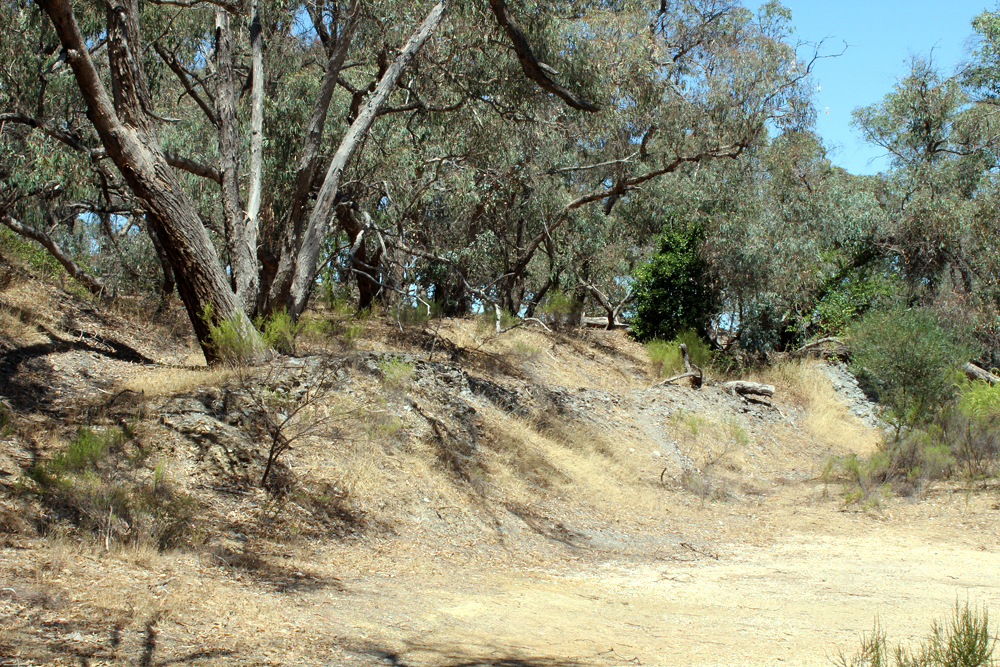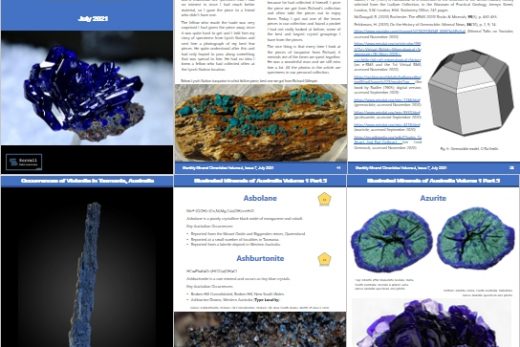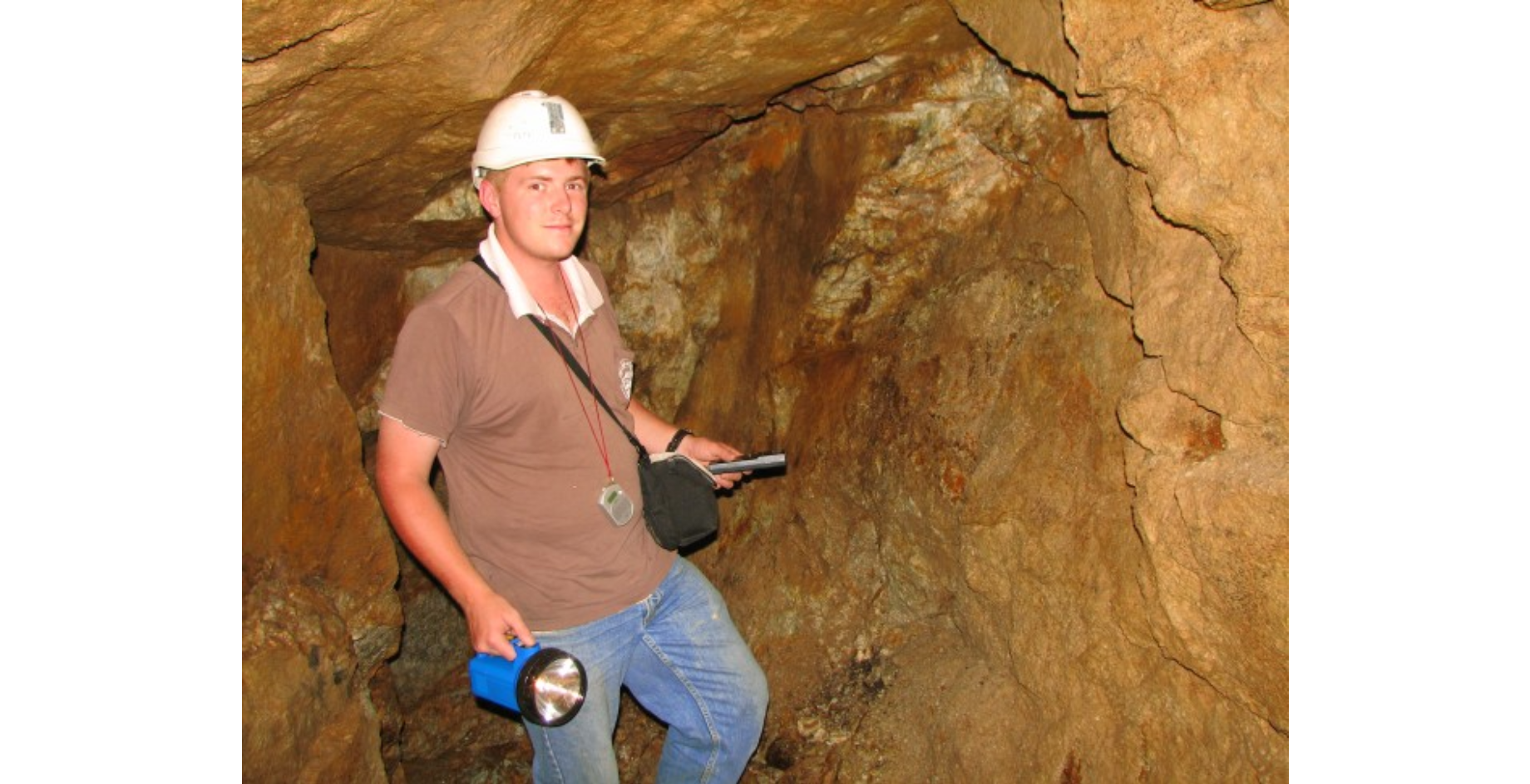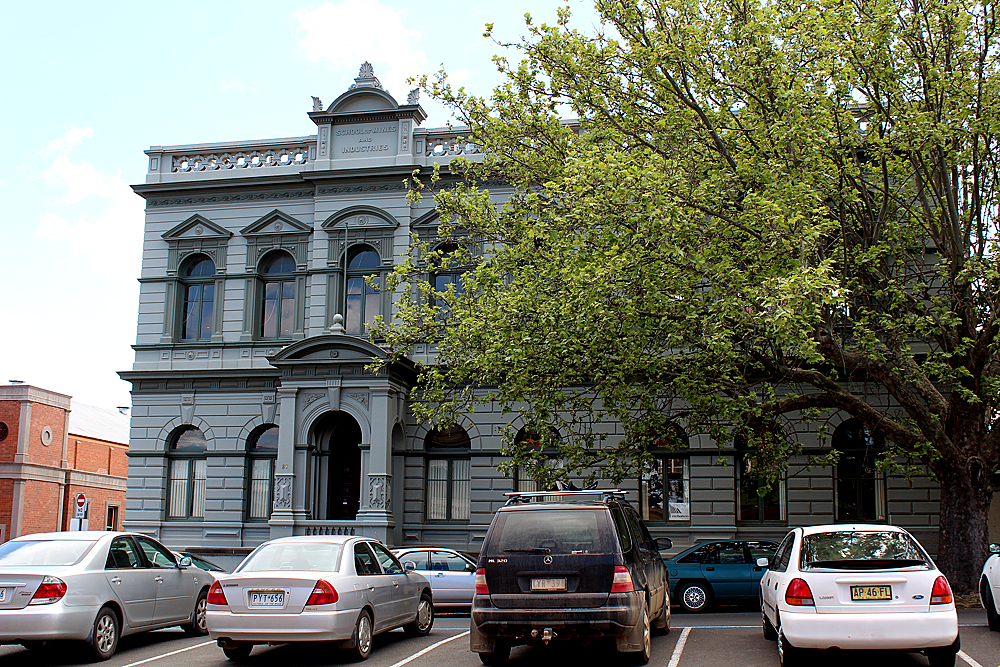The Duke of Cornwall Mine is just outside Fryerstown on the road to Chewton. There are dumps on one side of the road and the ruins of a Cornish Engine House on the other, registered by the National Trust.
Featured image: Cornish Engine House
Built in 1865, the only alteration in the appearance of the structure has been through weathering and the lack of maintenance over a long period of time. It is considered that local mudstone, Harcourt granite (lintels) and hand made bricks are the materials of construction and that the mine represents a good example of Cornish design. It is an important example of industrial archaeology in this state and a monument to the gold rush era of the mid 19th century.

From the Victorian Government Department of Planning and Community Development:
Duke of Cornwall Mine, Fryerstown, Victoria (in 1982)
Introduction – The engine house of the Duke of Cornwall Mine, located near Fryerstown, Victoria has been classified by the National Trust of Australia (Victoria), included in the Australian Heritage Commission’s register of the National Estate and is given statutory protection by its inclusion on the register of the Historic Buildings Preservation Council.
Existing remains – A considerable amount of physical evidence of the mine has survived. These elements…include the engine house, the magazine and the manager’s house and evidence of sites including the two main shafts, the offices and reservoir.
Engine House – The building is constructed predominantly of rough hewn local stone, although windows and other wall openings are dressed with brick, which was also used for the upper half of the chimney and at the corners of the buildings. Granite was used for the main ‘loadings’ on the ‘bob wall’. Very little evidence remains of the timber parts of the structure such as roof trusses and internal floors. One unusual aspect off the engine house is the location of the chimney in the central position on the end wall, rather than the usual corner or freestanding positions. The foundations, which supported the flywheel, axle and crank, are evident and a low stone wall on the southern side of the engine house marks the probable location of the boiler house.
Crushing Battery – Little evidence remains of the battery which is apparently located on the northern side of the engine house, in an area which is now mostly overgrown with pepper trees.
Shafts – Dauke’s shaft was located on the eastern side of the Fryerstown to Chewton Road and the pumps in this shaft were operated by the beam engine. Some evidence of stonework associated with the shaft can be identified and most of the mullock heap remains. A short section of tramway rail, presumably from the overhead tramway connecting the shaft and the battery has been located. Lamb’s shaft is marked by a mullock heap on the side of a gully approximately 150m to the northeast. Two other shafts were identified but neither can be named with any degree of certainty.
Powder magazine – Constructed of stone at a cost of £16 in 1865, the circular structure remains largely intact.
Managers House – The House constructed for H.W. Lamb survives although in a substantially altered condition.
Office Foundations – Foundations associated with the offices indicated on the 1868 plan can be identified.
Foundations of Engine House – On the eastern side of the road, substantial foundations of an additional engine house have survived in a very deteriorated condition. The exact purpose of the engine-house is unclear, but is may have been used for a winding engine, associated with a shaft between the foundations and the road.
The Dam – Evidence of the dam can be identified in the gully although most of the dam wall has disappeared.



